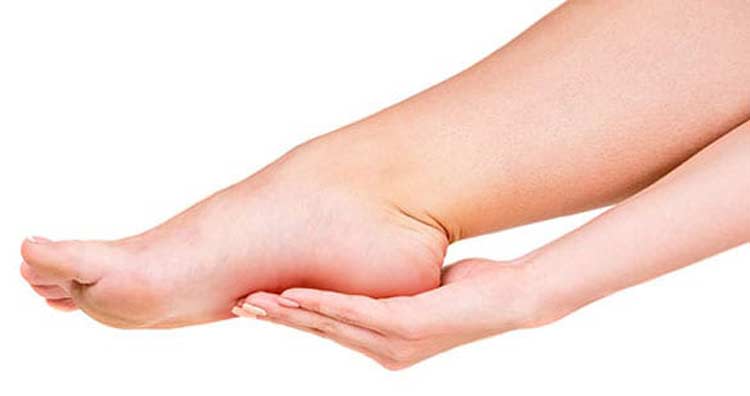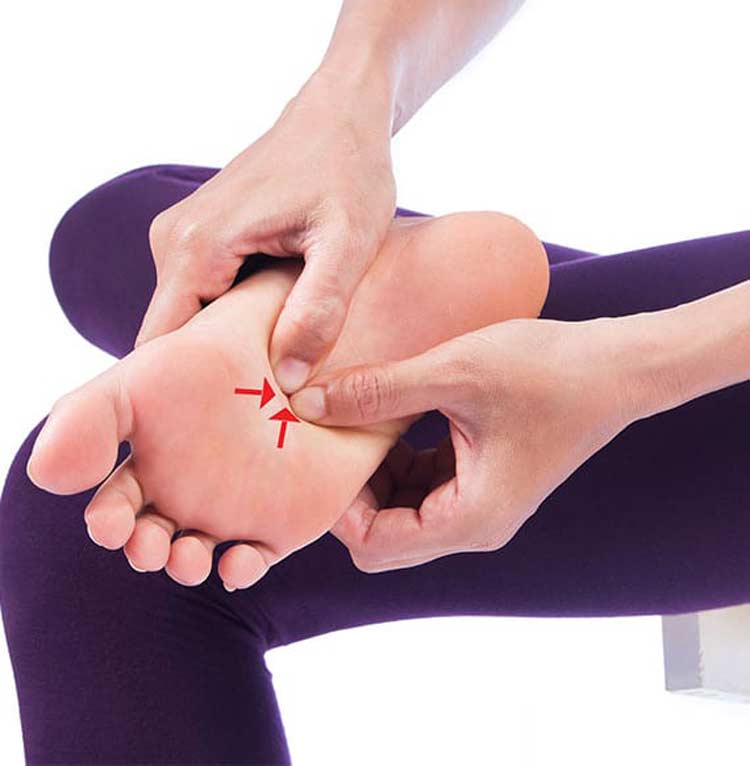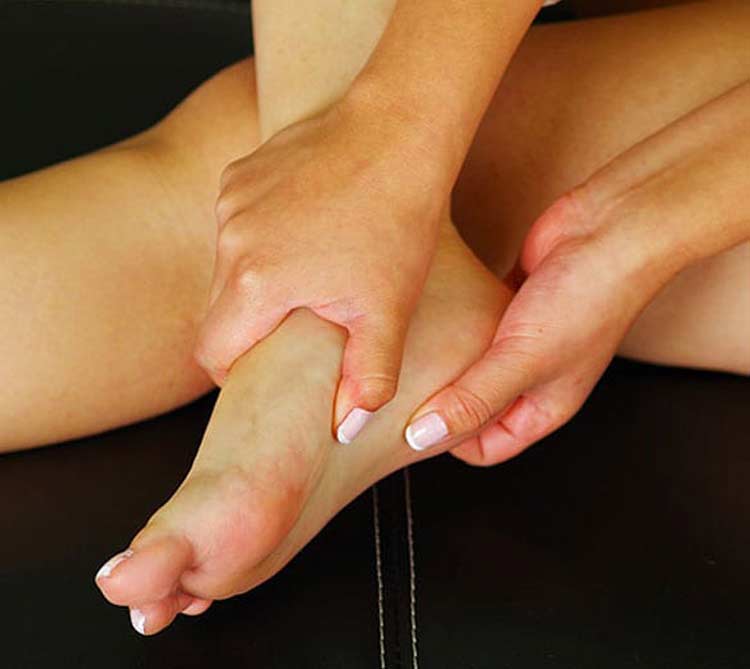
Discover how we can help you find relief from plantar fibroma.
Plantar fibroma is a nodule that forms on the bottom of the foot in the arch area. This fibrous knot grows within the plantar fascia tissue that runs along the bottom of the foot, running from heel to toes. The nodule is made up of the same type of tissue that is found in ligaments. Slow to grow, this nodule is benign, meaning that it is non-cancerous.
- This condition can occur on one or both of the feet.
- Typically less than an inch in diameter, a plantar fibroma lump will not go away on its own without some type of treatment.
Causes
It is not entirely clear if there are any direct causes for plantar fibroma. The most commonly held belief is that there is some genetic component that determines if someone will develop this condition or not. There has been no association between foot injuries and the development of plantar fibroma. While this condition can occur at any stage in life, it most frequently is seen during middle age. Men are more likely than women to acquire this fibrous nodule.
Risk Factors
Although research has not shown any direct cause for the development of a plantar fibroma, there are some risk factors that might increase the chances of an individual to suffer from this condition. Certain medications may play a role, such as those used to treat seizures or high blood pressure. People at higher risk for these nodules are those with:
- Diabetes mellitus
- Epilepsy
- Alcoholism
- Cirrhosis of the liver
Once an individual has developed a plantar fibroma, there is an increased risk of another one developing, even after successful treatment.


Symptoms
There may be no symptoms of a plantar fibroma, especially not in the early stages. Because this fibrous nodule is slow to grow, it can take some time before the lump itself is even noticed. Once the fibrous knot grows larger, it can put pressure on the soft tissues underneath the feet. This may only be noticed during activities that put external pressure on the bottom of the foot, such as walking or standing while barefoot. Wearing shoes can also put pressure on the knot and may result in pain.
Diagnosis
While a podiatrist may be able to determine a plantar fibroma with a simple examination, there are other conditions that can lead to the development of fibrous lumps in the soft tissue underneath the feet. Your doctor may want to rule out potential other issues before making a firm diagnosis. A plantar fibroma will not show up on an x-ray. This imaging tool is often used to rule out various types of tumors or malignancies that would appear with an x-ray. An MRI may be recommended as well. In rare cases, the doctor may wish to perform a biopsy to test the cells of the growth before deciding on a treatment approach.
Non-Surgical Treatment Options
If the fibroma is only an apparent bump and does not cause pain, the physician will most likely place the patient under observation to keep tabs on the growth. If pain is involved, there are non-surgical treatments that may be tried to help reduce symptoms and allow the patient to continue quality of life. These include:
- Topical treatments an inhibit the growth of fibrous tissue
- Corticosteroid injections can temporarily reduce pain and decrease the size of the nodule
- Orthotic inserts can be worn inside of the shoes for comfort and cushioning
- Physical therapy can help to break up fibrous knots and reduce pain by increasing blood flow to the area
A combination of these methods along with over-the-counter pain relievers may be all that is necessary for a patient to enjoy ongoing relief.
Surgery
If a plantar fibroma does not improve with more conservative treatment, your podiatrist might consider surgery as an option. There are risks involved when cutting in or around the plantar fascia because this band of tissue provides support for the foot. Following the surgery, hammertoes or flattened arch may occur and require the use of orthotic devices for comfort and proper function of the foot. Complications of surgery can involve infection, nerve damage, a painful healed lump, or recurrence of plantar fibroma.
Recovery
Because of the location of the nodule, it can take anywhere from one to two months before a patient can return to regular activity.

